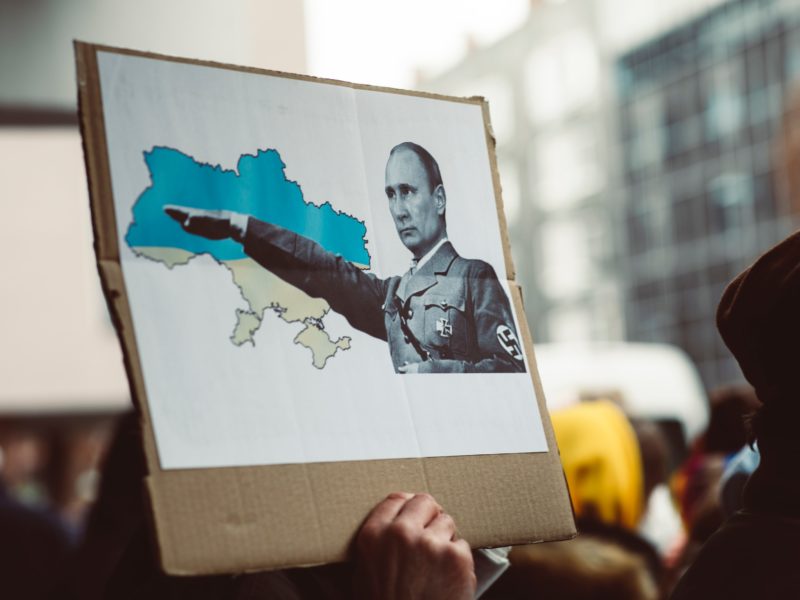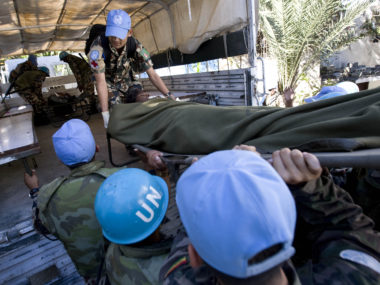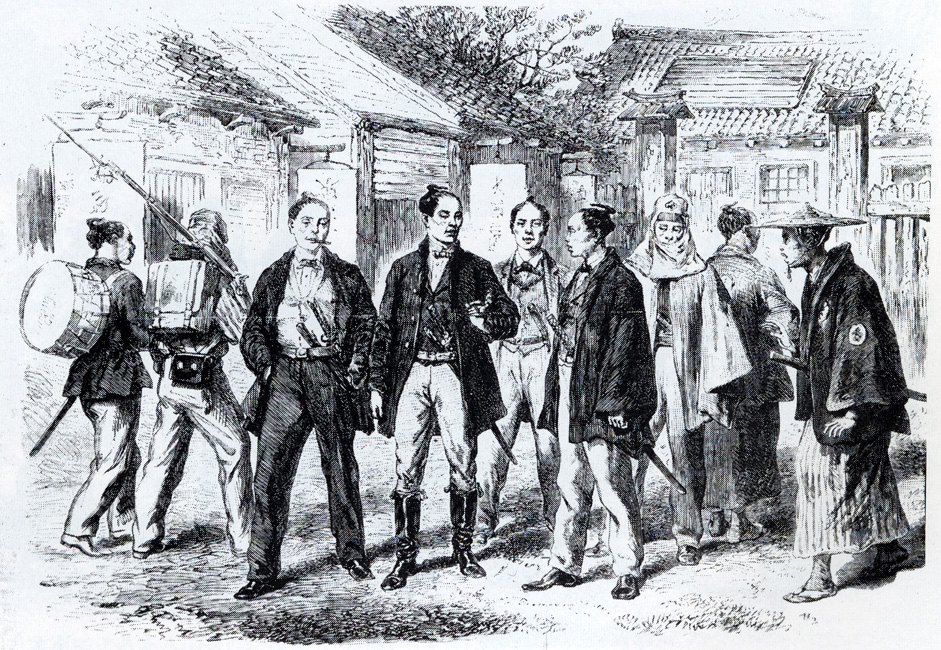Policymakers, activists, and ordinary people often make analogies between past and present, for example, by labeling 9/11 “the Pearl Harbor of the 21st century.” In doing so, people hope to better understand surprising events and develop a plan of action for themselves and others. Vladimir Putin employed historical analogies to justify his invasion of Ukraine, while Western leaders drew on their own understanding of World War II history to mobilize a surprisingly muscular response to Russian aggression.
Putin justified his February 24 invasion of Ukraine with faulty “historic analogies and metaphors.” He claimed that Ukraine is a mere part of historic Russia with no “stable traditions of real statehood,” whose ruling junta of “far-right nationalists and neo-Nazis” had seized power and killed innocent Russian-speakers just like “Hitler’s accomplices” eighty years ago. “We will not make this mistake [of appeasing Nazi Germany] a second time,” declared Putin in his invasion announcement.
Historical analogies also help us understand why Western democracies suddenly “woke up” after years of weak responses to Russian aggression against Ukraine. For many world leaders, parallels between Russia’s invasion of Ukraine and Nazi Germany’s 1939 invasions of Czechoslovakia and Poland became impossible to ignore. Both Russia and the West have cast themselves as the protagonists in a shadowy reprise of World War II.
Historical Analogies Took Off as the War Began
Many Western leaders initially appeared to have been taken by surprise by Russia’s invasion. Although some had raised an alarm after Russia’s annexation of Crimea in 2014, most continued to pursue friendly political and economic relations with Putin. This changed only in the final hours before Putin declared his “special military operation” on February 23. Comparisons between Putin and Adolf Hitler went viral as the first missile attacks struck Kyiv. Ukrainian officials promoted the analogy via a tweet in which a smiling Hitler strokes Putin’s cheek. The next morning, Ukrainian President Volodymir Zelensky wrote that “Russia treacherously attacked our state in the morning, as Nazi Germany did in #2WW years.” In the following days, journalists, academics, and world leaders dissected parallels between the two dictators. World War II-related Google searches like “Putin Hitler,” “Invasion of Czechoslovakia” or “Invasion of Poland” spiked the week of February 24, as global audiences turned to the past to understand the present.
Domestically, Ukrainian leaders invoked memories of the “Great Patriotic War” (the Soviet name for World War II) to mobilize mass popular resistance to the Russian invasion. Zelensky called on his compatriots to “win this Patriotic War of ours” and named six “hero cities,” a Soviet World War II-era award. Vitali Klitschko, the mayor of Kyiv, compared the 2022 Siege of Kyiv to the 1941 Siege of Stalingrad. Ordinary Ukrainians also understood their experiences by means of historical analogies with World War II. Journalist Nataliya Gumenyuk writes that elderly Ukrainians refer to the invading soldiers not as Russians, but as “nimtsi” (Germans), and she herself “could think of no other reference than Hitler’s battle for Kyiv in 1941.” Russian atrocities in Bucha and Mariupol evoked memories of the Holocaust.
Did Historical Analogies Cause the Western Response?
Were these historical analogies simply convenient rhetoric, or did they actually help shape the West’s response? In recent research with Kai Thaler and Lisa Mueller, we show that vivid historical parallels can transform people’s perception of the present and influence their subsequent behavior. From 2018-2020, young Chileans and Nicaraguans facing police violence recalled the popular struggles their parents waged against brutal 1970s and 1980s dictatorships. Much like Ukrainians, Latin Americans mobilized en masse and adopted historic symbols, tactics, and paradigmatic roles in their efforts to challenge present-day repressive governments.
A similar phenomenon appears to have occurred in Western capitals in the opening hours of Russia’s invasion. Shocking images with historical overtones helped make World War II analogies truly resonate with American and European policymakers. Vladimir Putin’s angry televised speeches, his 20-foot-long tables, and his public humiliation of his spy chief, Sergey Naryshkin, all reinforced the image of a fascist dictator. Russian troops pouring across the Ukrainian border recalled the Wehrmacht’s famous Blitzkrieg of Poland. The Z symbol painted on Russian tanks and billboards so strongly evoked a swastika that Moscow-based sociologist Greg Yudin concluded a literal group of Nazis had infiltrated the Russian security forces. Zelensky’s steadfastness channeled Winston Churchill’s leadership, and Ukrainian refugees escaping by train reminded onlookers of 1939. In short, these elements combined into a tableau of World War II, leading many observers to experience an uncanny sense of living in two times at once.
Historical analogy is useful to policymakers in uncertain times because it offers shorthand descriptions to understand the situation (“Putin is Hitler”) and a prescription (“If Putin is Hitler, then everything must be on the table“). As Ukraine’s military held strong and historical analogies increasingly permeated public discourse, the Western response accelerated overnight from complacency to “all-out economic war.” Analysts were caught off-guard by the rapidity of policy transformation: economists who began the week discussing the possible impact of a SWIFT cutoff were shocked when Western leaders announced central bank sanctions. US and European governments transformed their own security postures and rushed weapons into Ukraine after months of inaction while Russia built up its invasion force. Many Western policy responses were even framed in World War II’s language: the US passed a new Lend-Lease program to arm Ukraine while German Finance Minister Christian Lindner proposed a Marshall Plan to rebuild Ukraine.
Will World War II Analogies Continue to Shape the War?
Historical analogies provided Western and Ukrainian decisionmakers with key guidance in the opening days of the war. But will they continue to do so? Probably not. Historical analogies have their limits. Policymakers find historical analogies most useful when facing unexpected and surprising events, but their reliance on analogy recedes as they begin to better understand ongoing events.
In the future, we can expect the Russian-Ukrainian War to steadily supplant World War II as a historical reference point. This war has generated its own iconic episodes, such as Snake Island border guard Roman Hrybov’s rebuff of a Russian warship, and Zelensky’s (perhaps apocryphal) “I need ammunition, not a ride.” Policymakers facing future crises are likely to model their decision-making on Zelensky’s and Joe Biden’s, rather than Churchill’s and Roosevelt’s.
Eric Mosinger is an Assistant Professor at Santa Clara University.







